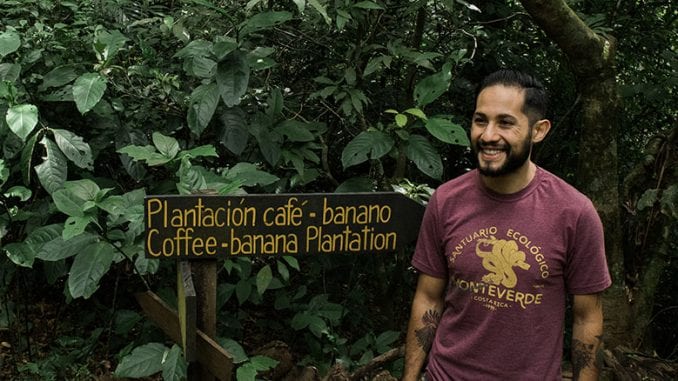
We take a look—in both English and Spanish—at a family farm in Costa Rica that is promoting sustainable agriculture through ecotourism.
BY KATRINA YENTCH
BARISTA MAGAZINE ONLINE
Cover photo by Santuario Ecológico
Italics = Spanish translation
A family in Monte Verde, Costa Rica, is showing visitors how permaculture can change the future of sustainable agriculture through its ecotourism experiences.
You may have heard the term permaculture in passing, but lately its importance in the eco-conscious movement is rising. Permaculture is a system that creates agricultural landscapes that work with nature—a response to the excess of conventional agriculture that contributes to global warming.
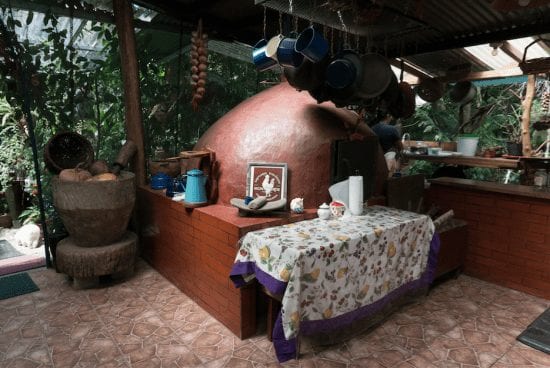
The Salazar family opened Santuario Ecológico in 1999 in Monte Verde, a popular tourist area in Costa Rica. Santuario Ecológico has 115 acres of land and a facility that houses an Airbnb room, a kitchen for cooking lessons, and a section for the coffee experience, all of which is family-run.
The coffee experience is a two-hour-long tour that showcases the family’s coffee plantation, along with ways that it works with other parts of the farm. The tour guide Chris is the leader behind this portion of Santuario Ecológico, a passionate member of the coffee community who harvests and roasts his family’s coffee. “It all started 11 years ago when my mother brought 600 coffee plants to grow in the middle of the forest, our family project Ecological Sanctuary,” says Chris. “At the beginning I wasn’t really convinced of the idea but I had to go plant them with her and learn how to do it. Three years later the coffee had its first harvest and my mom gave me the opportunity to benefit from it. … This year will be our seventh harvest and I feel really happy with the results we’ve gotten. It has improved with the nutrition of the plants, the recollection of coffee, the drying times and temperatures, and of course the roast.” Chris is currently in the process of obtaining an Authorized SCA Trainer license and eventually Q-Grader certification, and hopes to get his coffees into Cup of Excellence so that he can showcase excellent coffees grown sustainably.
On the coffee experience, Chris walks visitors through the sanctuary, explaining the history of coffee and its presence in Costa Rica. Chris also describes the methods of coffee harvesting and processing by showing tourists the various components of their coffee plantation, from the wet mills to the Gesha plants growing on the hills. Depending on the time of the year, it’s a chance to see some of these methods at work.
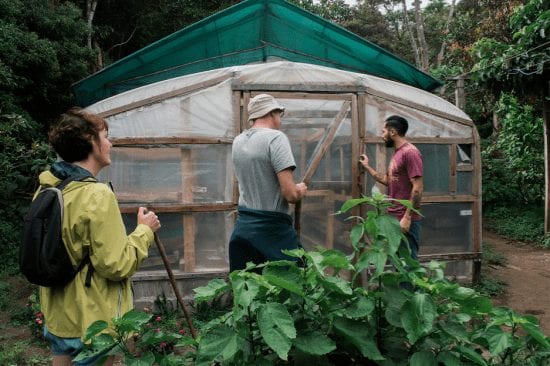
On the plantation, there are avocado and citrus trees, whose leaves create an organic fertilizer that nourishes the coffee plants. These trees and plants also have blooms in conjunction with one another; the first coffee bloom depends on the bloom of the citrus, and the second is bound with the other trees. “This attracts the pollinators, and thus it achieves a genetic exchange between the trees and the coffee plantation,” explains Chris. “The pollinization helps that production to be 30% more profitable, helps to have more healthy plants, and generates a photosynthetic competition, since these trees are taller than the coffee plants, so it stimulates them to grow faster.” This year, the Santuario Ecológico also has plans to grow 3,000 more coffee plants, specifically Sidamo, Gesha, and SL 28, to see which ones will best adapt to their land and achieve higher cupping scores.
We will continue this piece tomorrow.
En español …
Una familia en Monte Verde, Costa Rica está mostrando la práctica de permacultura a viajeros, y como puede cambiar el futuro de agricultura sostenstible por medio sus experiencias ecoturismos.
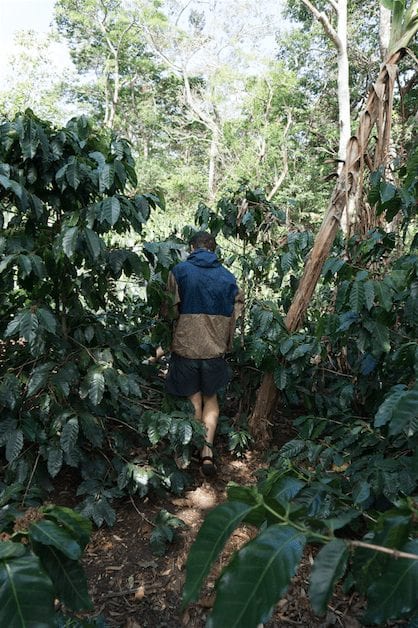
Es probable que has escuchado la frase permacultura, ya que su importancia está creciendo. Permacultura es una sistema que crear paisajes agriculturas que trabajan con la naturaleza—una respuesta al exceso de agricultura convencional que aporta a cambio climático.
La familia de Salazar abrió el Santuario Ecológico en 1999 en Monte Verde, una area popular para turismo en Costa Rica. Santuario Ecológico tiene 115 acres de tierra y una instalación que tiene un cuarto por Airbnb, una cocina para talleres de cocina, además un parte para la experiencia de café especialidad, todo lo que conduce por medio la familia.
La experiencia de café especialidad es un recorrido que mostra la plantación de café de la familia, y formas que funciona con los otros partes de la granja. La guía se llama Chris Salazar, el líder de este parte de Santuario Ecológico—un miembro apasionado de la comunidad de café. Él cosecha y tuesta el café de su familia. “Todo inicio hace 11 años cuando mi madre trajo 600 plantas de café para sembrar en medio del bosque, en nuestro proyecto Familiar El Santuario Ecológico,” dice Chris. “Al principio yo no estaba muy convencido de la idea pero tuve que ir a sembrarlo con ella y aprender cómo hacerlo, 3 años después el café dio su primer cosecha y mi mamá me dio la oportunidad de poderlo beneficiar… Este año será nuestra sétima cosecha y me siento muy feliz con los resultados que hemos obtenido, se ha mejorado la nutrición de las plantas, la recolección de café, los tiempos de secado y temperaturas y por supuesto el tueste.” Ahora, Chris está en el proceso de obtener su licencia AST para que enseñar de café y pues una licencia Q-Grader. Un día, él espera que sus cafés estarían en Cup of Excellence así que pueden mostrar cafés grandes que hayan creceados sostensibles.
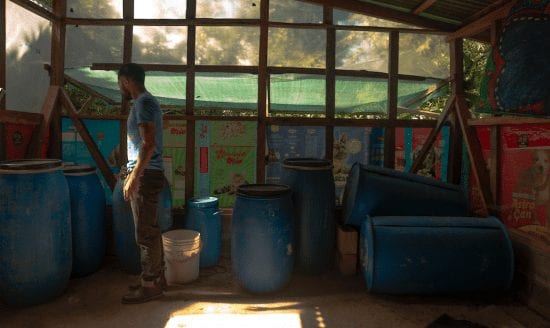
Durante la experiencia de café, Chris camina con los viajeros por medio el santuario, explicando la historia de café y su presencia en Costa Rica. También, Chris describe los métodos de cosechar y procesando por mostrando turistas los partes varios de su granja, como los molinos húmedos y las plantas de Gesha que crecen en las colinas. Dependiente del tiempo del año, es una oportunidad para ver algunos de los métodos a funcionar. En la plantación, hay árboles de aguacate y cítricos, cuyas hojas crean una abono orgánico que los nutren las plantas de café. Estos árboles y las plantas tienen floraciones juntos. “Esto atrae a los polinizadores para y así logra un intercambio genético entre los árboles y la plantación de café,” dice Chris. “La polinización ayuda a que la producción sea un 30% más de rentable, ayuda a tener plantas más saludables y a generar una competencia fotosintética, ya que estos árboles son más altos que las plantas de café por lo que las estimula a crecer más rápido.” Este año, el Santuario Ecológico tiene los planes para crecer 3,000 plantas de café de muchos variedades como Sidamo, Gesha, y SL 28 para que aprender cuáles adaptan a su tierra y obtener mas puntos de catacion.
Vamos a continuar el segundo parte mañana.

